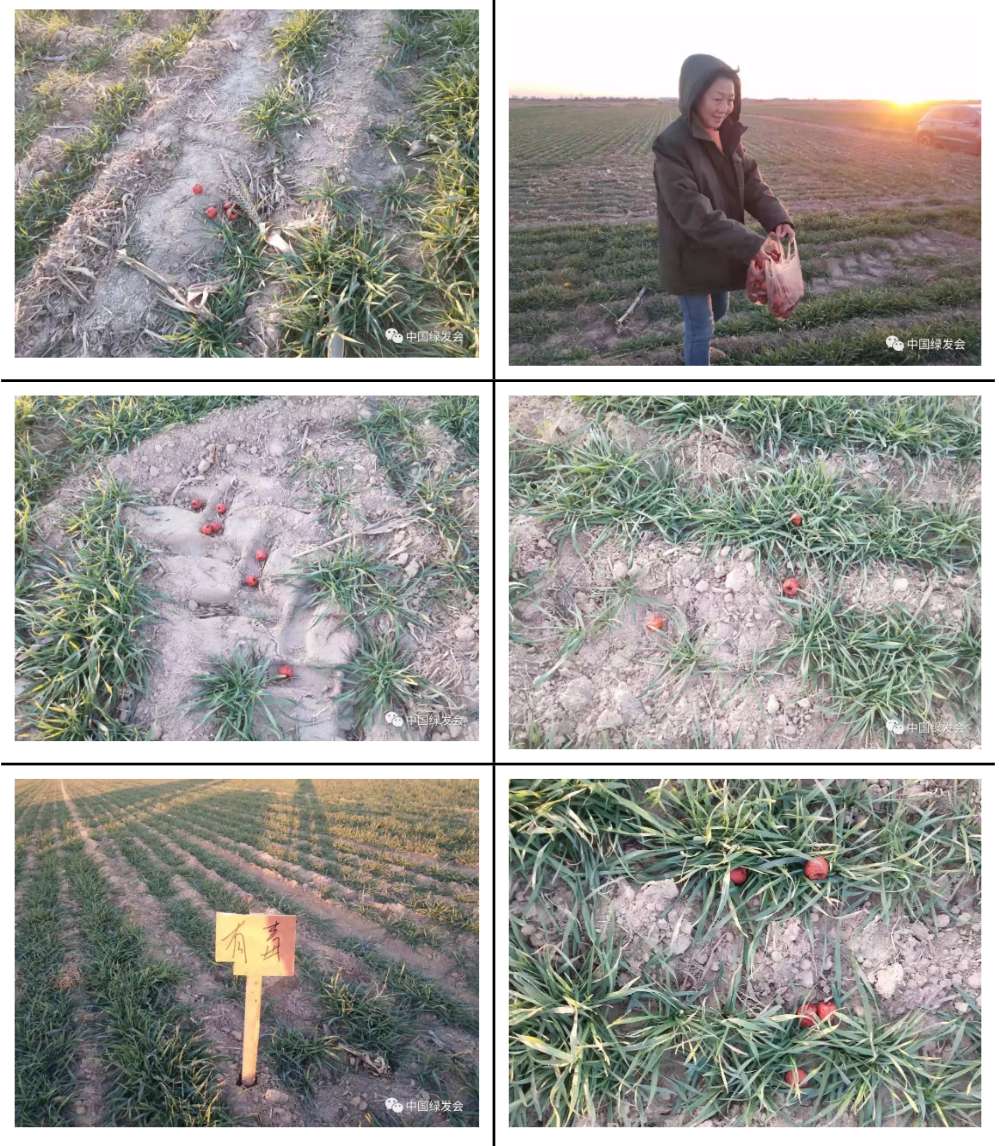At night of December 11, China Biodiversity Conservation and Green Development Foundation (CBCGDF) volunteers who just finished the three-day investigation of great bustards wintering areas learned that a large amount of poisonous fiberglass and Chinese dates were found in the cornfield in which the voluntary group had patrolled before. According to CBCGDF volunteers, farmers laced toxicants in case sheep eat wheat seedlings, a behavior that poses a potential threat to the migratory great bustards who forage around. It is not an easy task to find out all poisons hidden underneath seedlings. What volunteers can do is merely to mobilize more local people to pick up poisons.
A volunteer of CBCGDF China Conservation Area for great bustard (CCAfa) said: “most villagers have no idea that toxicants they spread in the field are threatening the habitat for great bustards. They don’t acquire sufficient knowledge of birds’ protection. the local relevant departments don't generate extensive publicity on science popularization. For instance, we failed to find out any piece of a sign about great bustards’ conservation during the field investigation."
It isn't the first time for CBCGDF volunteers to witness poisoning in the wintering area for great bustards. During the finding and observation of great bustard in Spring Festival of 2018, volunteers from the China Conservation Area for great bustard at Changyuan (CCAfa) found large amounts of poisonous corn kernels in the cornfield. In January 2018, the director of China Conservation Area for great bustard at Jinzhou (CCAfa), and volunteers found 27 ruddy shelducks who were died of poison. And one was heavily injured with liquid drooling. The director of China Conservation Area for great bustard at Changyuan, has been long paying continuous attention to the repeated poisoning incident which he assumed that would happen each year.
Great bustard has a preference for the eco-environment of farmland as it feeds on wheat seedlings and potatoes scattered in the field. Therefore, residual chemicals in croplands would poison the bird, not to mention the poison baits deliberately laid by poachers. As the first-class national protected animal, great bustard enjoys the reputation of the protector of grassland as it feeds on weeds as well as pests. The population of its subspecies (Otis tarda dybowskii) is less than 1,000.
Some poachers hunt great bustards with high-voltage grid and hounds. Furthermore, because the great bustards build their nests on the ground, the young birds are extremely susceptible to damage by humans and other animals, thus increasing the losses of young birds in the nest. Based on the above reasons, the population of the great bustard in China is decreasing gradually, and the habitat is threatened by the deterioration, so the protection of the great bustard is imminent.

(Photo credit: CBCGDF volunteers)
Original Chinese article:
http://www.cbcgdf.org/NewsShow/4855/10693.html
By / Wang Yanqing Modified / Maggie
